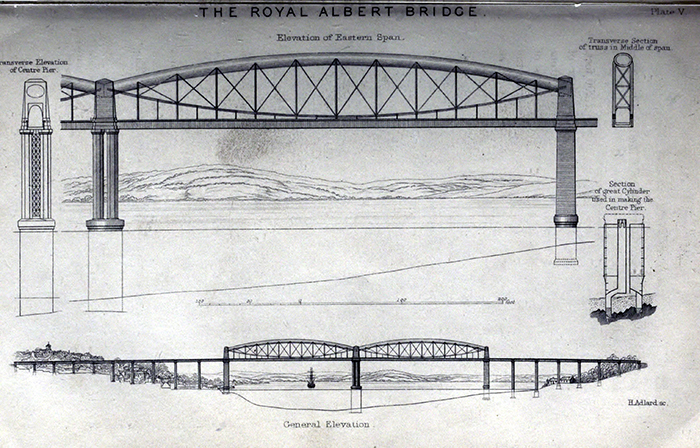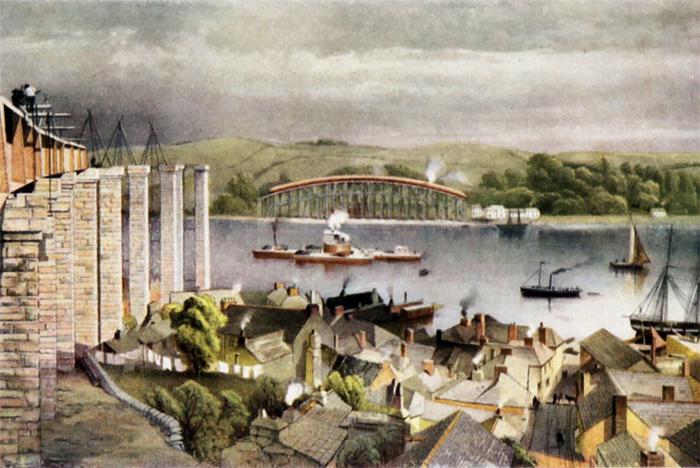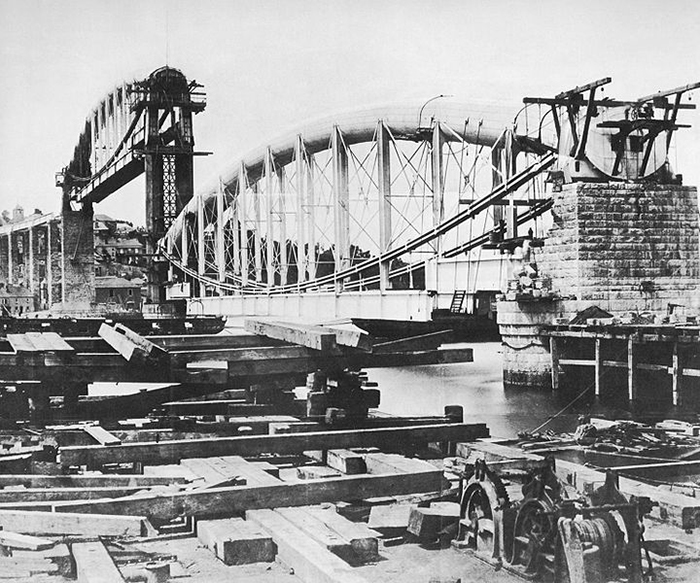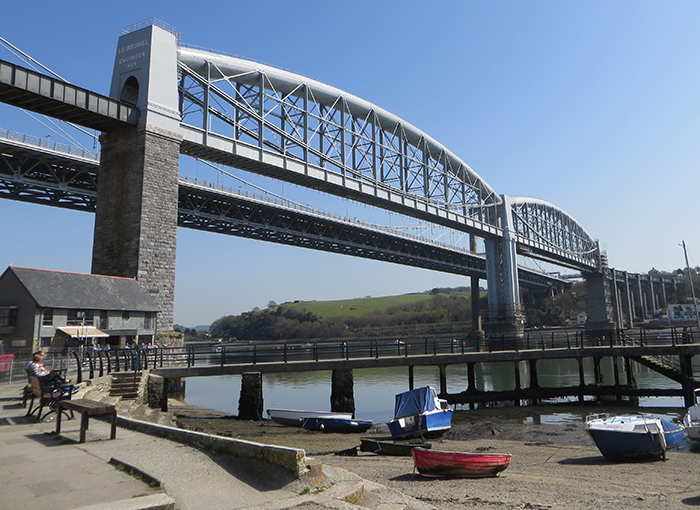

 STUART JORDAN gives us the history behind this landmark bridge.
STUART JORDAN gives us the history behind this landmark bridge.
Isambard Kingdom Brunel was very much a one-size-fits all engineer; if there was something to be built, he could design it.

Original line drawing of the Royal Albert Bridge
After the Liverpool and Manchester Railway opened in 1830 there was an explosion of railway building across the UK, as different companies competed to connect urban and industrial areas. Although an Act of Parliament was required to acquire land to build railways, there were not really any checks made on viability or costs of routes, so these permissions were relatively easy to come by.
The railway stretched out across to all corners of the country, including down to the West Country. Two rival routes were proposed to cross from Devon to Cornwall; one would trace around the north of Dartmoor from Exeter to Falmouth, and the other would run along the coast serving Devonport and St Austell.
The coastal route was proposed by the Cornwall Railway, backed up by Brunel’s Great Western Railway. The first Act of Parliament was rejected due to the original plan to carry trains across the Torpoint Ferry. Brunel amended the plan to a bridge across the Tamar at Saltash instead and the Act was passed.
It was not to be Brunel’s first iron bridge; this was the Chepstow Railway Bridge over the River Wye. The River Tamar at Saltash is 1,100ft wide and had to accommodate the clearance required by the Admiralty in order to keep the river navigable. The height required meant that Brunel’s original plan for a timber bridge had to be rethought. He settled on a two-span wrought iron structure with lenticular trusses. A tubular arch over each span with a bottom chord comprising of two chains would hold up the trusses.

Assembly of one of the spans alongside the river
A survey of the riverbed was begun in April 1848. 175 borings were made in order to determine the best position for the foundations. The work was originally tendered to a shipbuilder named Charles John Mare, who had originally worked on the Britannia Bridge across the Menai Strait. Mare filed for bankruptcy part-way through building the first truss, so the Cornwall Railway completed construction themselves. The second truss was built by Messrs Hudson and Male.
A jetty and workshop was built on the Devon side of the Tamar. A 9ft tall, 37ft radius iron caisson was constructed and sunk into the specified location. The water and mud were pumped out, allowing the central pier to be constructed. Work finished on this pier in November 1856.

The second span while being jacked up into place
Work on the landward piers began from the Cornwall shore, which were completed in 1854. The Cornwall span of the bridge was completed in 1857 with the piers built up beneath it as it was jacked up. The main Devon span was raised up in a similar manner the next year. Now, that the bridge was complete, it was tested by a Colonel Yelland of the Board of Trade in 1859.
It was decided that this new bridge between Plymouth and Saltash would be named after Prince Albert. He agreed to open the bridge on 2nd May 1859, travelling from Windsor on the Royal Train. Brunel was too ill to attend, so was represented by his chief assistant Robert Brereton. Public services across the bridge began two days later.

The Royal Albert Bridge as it looks today, with the Tamar Road Bridge in the background
Brunel suffered a stroke and died just four months after the bridge was opened, at the age of 53. The words "I.K. BRUNEL ENGINEER 1859" were added to the Royal Albert Bridge to commemorate him. In May 1892 the track was converted from Broad Gauge to Standard Gauge during the conversion of the whole Great Western Railway.
After a £10m refurbishment by Network Rail, the Grade 1 listed Royal Albert Bridge is still in use today, crossing the Tamar from Devon to Cornwall alongside the Tamar Road Bridge.